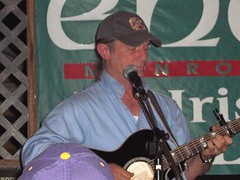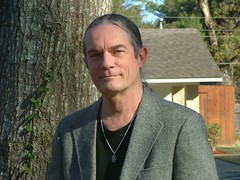I arose tired from my weekend of signing and selling books. This morning, I must prepare for my university classes, make sure I get books for my program Thursday night in Greenville, Texas, and call some managers about signings and a score of other tasks. I thought the best entry this morning would be the article I wrote for the Celtic Festival booklet. Here it is:
Celtic Louisiana
Celtic émigrés came to America for many reasons. Many were transported from Scotland to America after the Cromwellian Civil War, the Jacobite Rebellion, and the Highland Clearances. One noted exodus occurred in 1732 when Scots, mostly from Argyll, came to Cape Fear, North Carolina, on the Thistle, a ship now known as the “Scottish Mayflower.”
From Northern Ireland came the Scots-Irish, who had themselves been transported earlier from Scotland to Ireland by the English. Between 1715 and 1726 some 250,000 Scots-Irish, weary of being England’s pawns, left Ulster to come to America. And in the south of Ireland, huge numbers joined the exodus. Huge numbers of the Irish fled or were displaced from the Emerald Isle by both famine and the tyranny of the English. They were forced to face the difficult journey across the sea to the New World on the infamous crowded and disease-ridden “coffin ships,” such as the Agnes, Virginius, and the Naomi. Nearly two million Irish came to America between 1830-1840. More than 2.6 million Irish came to America after 1860. Now, over 12% of Americans claim to be of Irish descent, and an equally large percentage, Scots-Irish.
The story of the Celtic Diaspora is in a significant way, the story of America.
After the Louisiana Purchase, Celtic people migrated to Northeast Louisiana like swarms of roving bees. They came here—the Irish, the Scottish, the Scots-Irish, the Welsh, and the other Celtic Nations—so many that it’s been said that early maps marked the region as Celtic Louisiana.
The impact of the Irish and Scottish newcomers was felt immediately in Louisiana. New Orleans celebrated its first St. Patrick’s Day in 1809. Andrew Jackson, one of Ulster’s sons, led his army to victory against the British here in Louisiana in one of history’s most famous battles during the War of 1812. By 1860, there were over 24,000 Irish in New Orleans. When the War Between the States began in 1861, the famous 6th Louisiana was formed, led by Irish-born leaders such as Billy Monaghan. These fierce Irish boys were known as the “Fighting Tigers.”
Families drifted into Northeast Louisiana from the east, and boatloads entered the Southern ports of New Orleans and Mobile and made their way north. Finally, a great number of them came here, pinning themselves to the earth, declaring the farmlands, the piney woods, and the cities of Northeast Louisiana to be their home. Regional phonebooks reveal the extent of their immigration. Search those listings and you will see page after page of Celtic surnames such as you might find in a Dublin or Edinburgh phonebook. Northeast Louisiana is truly a new Celtic Nation.
People of the Celtic nations settled Northeast Louisiana, and with them came their heritage. Wherever Celtic people go, they bring a sense of history and community. The blood of their ancestors stirs their own veins. They came with a strong work ethic, a love for family and for the land, a rich inner spirituality, and a fierce fighting spirit. These are the personal qualities that have always made the Celtic people unique—qualities that have always been a source of their strength. Perhaps even more significant in relation to this festival, the Celtic people have always possessed a strong devotion to aesthetics, to the arts. Loving music, art, dance, and story telling, they gathered to celebrate on every possible occasion.
At the Festival, you will once again experience and reconnect to your own Celtic Heritage. Our nation is experiencing a Celtic Renaissance. Declare yourself to be a part of that Renaissance. Use your time here to teach your children about their ancestors and their homeland. May the music you hear stir your blood like it once did your ancestors. Learn their forgotten crafts. Open your eyes to the beauty of Celtic art and costumes.
Yes, the Celts came to Northeast Louisiana. And once again in 2007, Celtic families and clans have congregated to celebrate and honor their heritage. We’re glad you’ve attended our festival.


